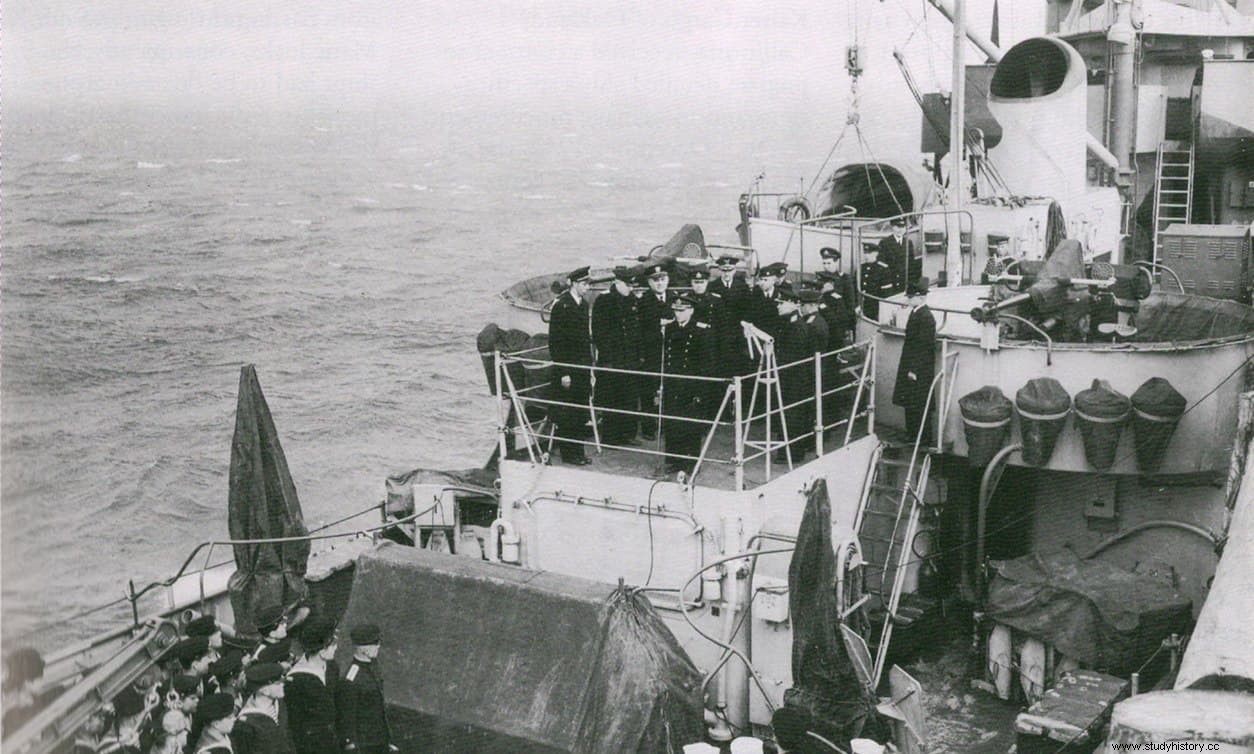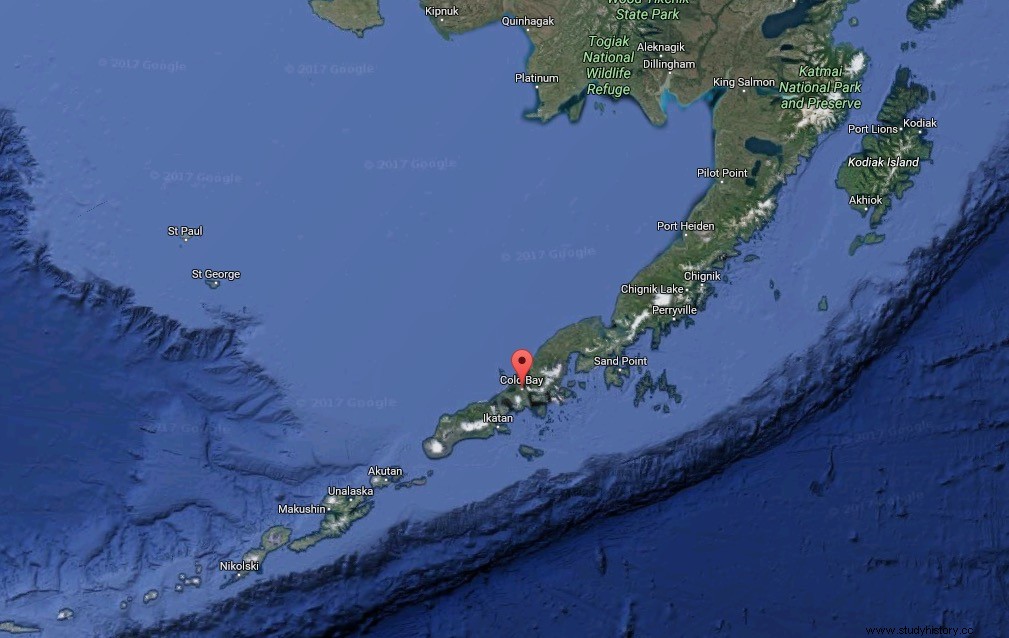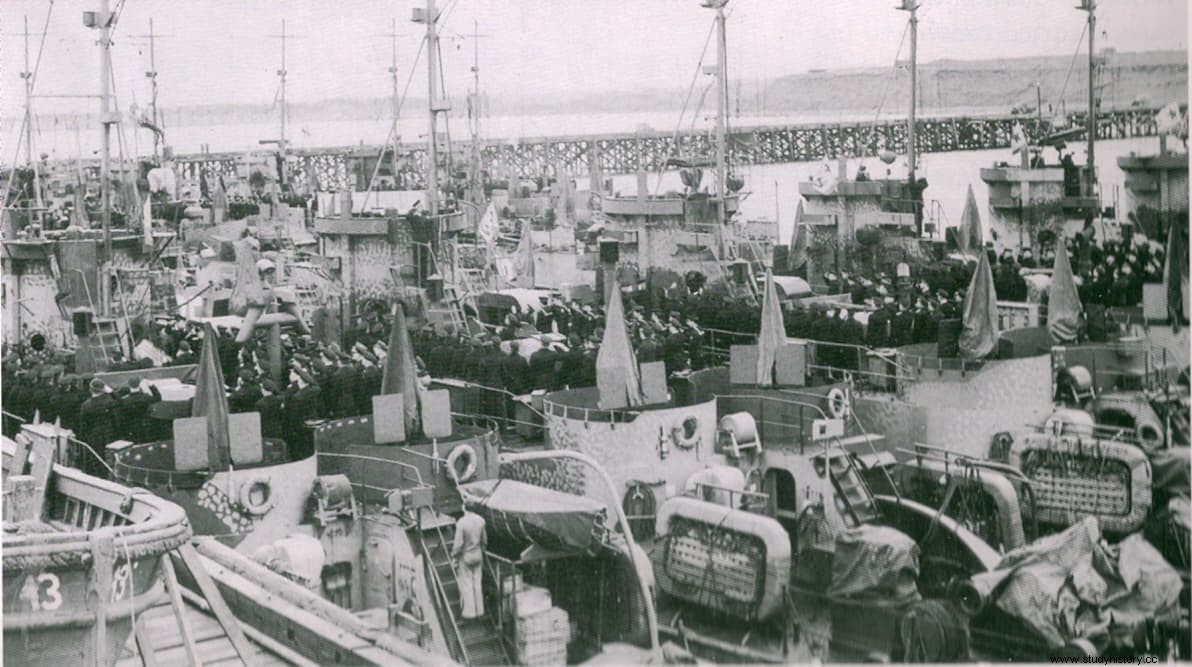In exchange for the Soviet Union's declaration of war on Japan, the United States secretly began a ship loan program to the Soviet Navy in the spring of 1945.
Despite the fact that both the Russian Empire and later the Soviet Union had their war clashes with Japan since the Russo-Japanese War of 1904 and Japan's intervention in the Russian Civil War between 1918 and 1920, both countries signed a neutrality pact on 13 April 1941.
This ensured that they would not be attacked by each other while concentrating on other scenarios. Japan in the war against the United States, and the Soviet Union from Operation Barbarossa in June of that same year, in fighting the German troops.
The pact was scrupulously adhered to by both sides, with the Soviets denying all American requests to allow them to set up air bases on their territory from which to launch attacks on Japan.
Stalin made it clear to the Allies that he would only declare war on Japan three months after Germany's complete defeat, whenever that happened. He did it in a meeting with the American ambassador Averell Harriman in October 1944, adding that for this he had to receive help and supplies that would allow the development of a large Soviet army in East Asia.

Americans were provided with a list of equipment they needed, which they included in an annual lend-lease program codenamed Milepost .
On December 20, 1944, Soviet Admiral Alafusov, Chief of the Navy General Staff, and Admiral Clarence E. Olsen, Commander of the American military mission in Moscow, reached an agreement to also include in the program the transfer by the United States to the Soviet Union of aircraft and ships of various kinds, including landing craft and minesweepers.
At the same time the Soviet crews were to receive training to operate the American ships that would be transferred to them. In order to keep the program secret, and avoid alerting the Japanese, the location of Cold Bay in the Eastern Aleutian Islands, Alaska, was chosen as the location for the training and transfer of the ships, due to the virtual absence of a civilian population (even today barely reaches 100 inhabitants).

By mid-February 1945 the program was renamed Project Hula and from April 10 the first Soviet officers and sailors began to arrive at Cold Bay for training. These were transported in merchant ships, which then continued to the North American West Coast, from where they returned with the materials included in the agreement. Until June, about 5,500 soldiers of the Soviet Army arrived in Cold Bay.

One of the main problems that the American instructors encountered, apart from language, was the complete lack of knowledge of the Soviets about technologies such as sonar and radar.
The first convoy of transferred ships, 8 minesweepers, left Cold Bay for the Soviet Union on May 28, 1945. The second, two days later, already included 6 submarine chasers. But the stars of the deal would be 30 Tacoma-class frigates. heavily armed, which started from Cold Bay on July 15. By the end of that month, 100 of the planned 180 ships had been transferred to the Soviet Union.
Stalin finally declared war on Japan on August 8, 1945, and although Japan formally surrendered to the Allies on September 2, the Soviet offensive in Manchuria, Korea, and the Sakhalin Islands continued for another three days. The Hula Project, despite everything, continued to be kept secret and, in fact, on September 2, the Soviets took control of the last four ships transferred in Cold Bay.
On September 5, the Americans closed the project, although there were still 31 ships to deliver. During the 142 days that it lasted, some 12,000 Soviet soldiers, including 750 officers, trained at Cold Bay. 149 combat ships were transferred to the Soviet Navy, none of which were renamed except by designation.
Five of them disappeared in action, sunk by Japanese coastal artillery on August 18 during the Soviet landing on Shumshu, one of the Kuril Islands.

The following year, in February 1946, the United States requested the return of all the ships. But by then relations with the Soviet Union had deteriorated so much that it was not until 1948 that the Soviets agreed to start the return process.
In 1957, the United States Office of Naval Intelligence reported that of the 149 ships on loan, only 18 remained under Soviet control, including nine minesweepers and five submarine chasers. These were so deteriorated that it was not worth claiming them, due to the high cost of the transfer. So some were scrapped in the Soviet Union, but others were delivered to third countries. The People's Republic of China thus received two minesweepers.
Some of those that did return, like the USS Gallup and the USS Glendale , were re-commissioned into the US Navy and participated in the Korean War in 1950. These in particular were finally transferred in 1951 to the Royal Thai Navy , the Thai Army, where they served until 2000.
